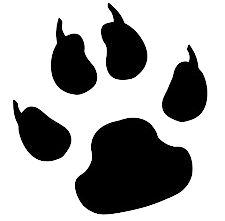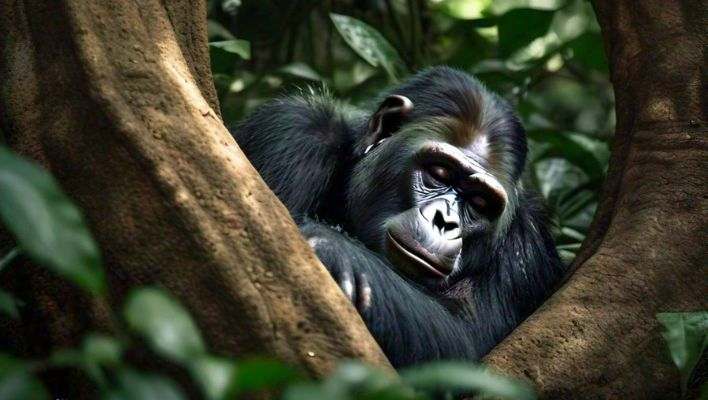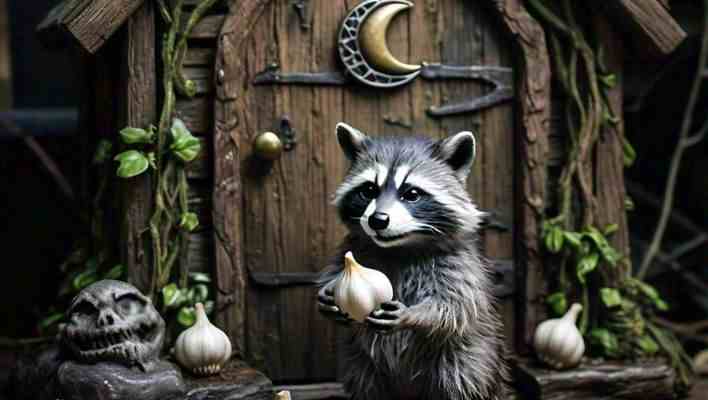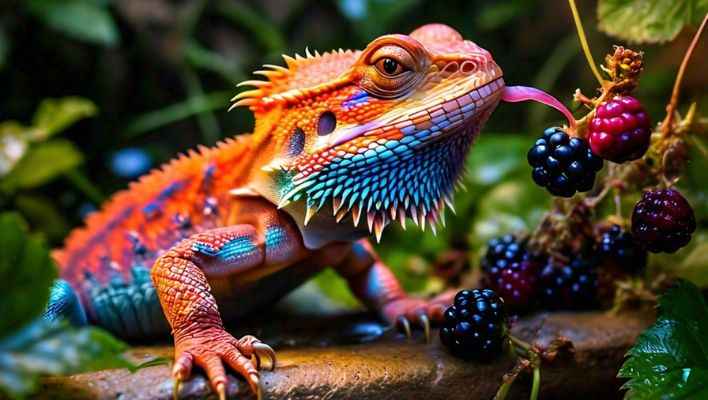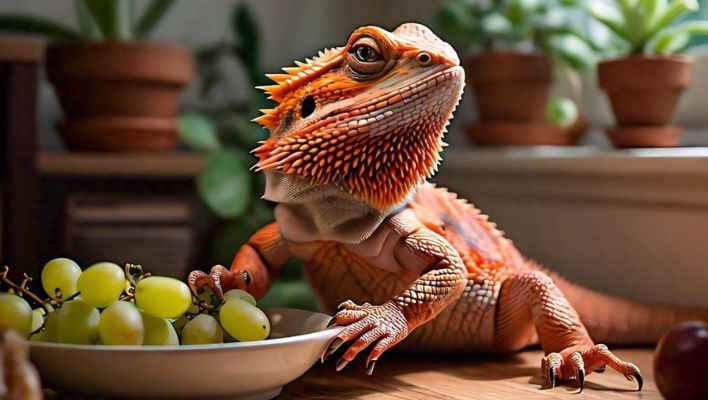Why Do Deer Jump In Front Of Cars? : 15 Shocking Reasons
Imagine driving peacefully when a deer suddenly jumps onto the road before you. Why does this happen?
In this article, we discuss the question “Why do deer jump in front of cars” and provide you with surprising reasons behind this risky behavior to help you stay safe on the road.
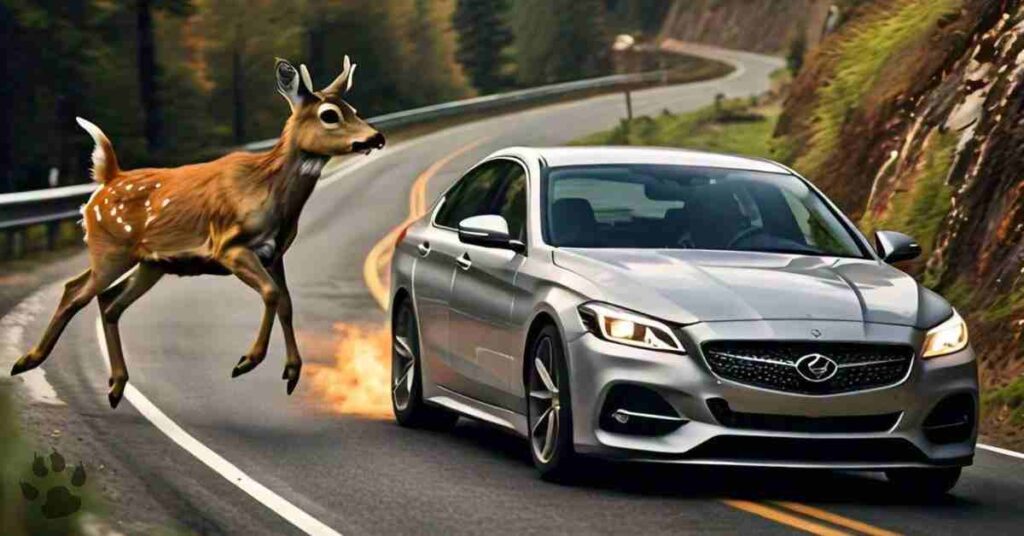
15 reasons why deer might jump in front of cars:
Flight Instinct: Deers quickly run away when they see danger, such as a car coming towards them. This automatic reaction can lead them to jump onto the road.
Disorientation from Headlights: When deer see bright headlights, they can become temporarily blinded and confused. When they are confused, they might act unpredictably, such as jumping into traffic in front of a car.
Mating Season (Rut): In the rutting season, deer become more active and less cautious while finding mates. When they are more active, they sometimes cross roads without watching for traffic.
Searching for Food: Deer might enter roads while looking for food, especially during dawn and dusk when they are most active. Their food search may bring them to traffic-filled places.
If you’re interested in learning how to attract deer to your property to provide them with a safer alternative, check out our article on How to Attract Deer to Your Property.
Habitat Fragmentation: Habitat fragmentation happens when roads divide deer habitats, making deer cross them to find food, water, or shelter. This increases the likelihood of deer running into vehicles.
Migration Patterns: Deer often cross roads during seasonal migrations as they search for food, water, or new places to live.
Herd Behavior: When one deer crosses a road, the others in its group often follow it. When deer move together, it can cause several to cross the road at the same time, raising the chances of accidents with cars.
Panic or Startle Response: When deer hear sudden noises or see bright lights, they can act in unexpected ways. If they panic, they might run directly into the path of an oncoming vehicle.
Young and Inexperienced Deer: Fawns are young deer that may not know how to avoid roads and cars, which can cause them to cross roads without understanding the danger.
Natural Curiosity: Deer may cross roads when they’re curious, especially if something on the other side interests them. This can lead them into traffic without them knowing the risk.
Chasing: When it’s mating season, male deer chase females and might be less cautious. They sometimes cross roads quickly without being noticed while chasing their mates.
Escaping Predators: When chased by coyotes or wolves, deer might cross the roads to escape. The road appears to be an easy escape, but it usually puts them in danger of car accidents.
Crossing Obstacles: To avoid natural problems like rivers or steep slopes, deer may choose roads to reach their destination.
Decreased Human Activity: Deer might crossroads more easily in quiet areas or times because they don’t see roads as risky when there’s less activity.
Unfamiliarity with Roads: Deers who haven’t seen roads before may not know that roads are dangerous for them. Without much experience with heavy traffic or people, they may cross roads unexpectedly and not be aware of the danger from vehicles.
How to Avoid Hitting a Deer?
To reduce the chance of hitting a deer, follow these suggestions:
High Risk: Collisions with deer are a major issue in areas with a lot of deer.
Statistics: More than 1 million deer-related accidents occur in the U.S. each year, with at least 200 leading to deer deaths.
Prevention: It is essential to follow best practices to prevent deer accidents.
Comprehensive Strategies: Using some recommended tips can help you stay safe while driving where deer are common.
Immediate Actions to Take:
If a deer comes in front of your car, stay calm to control the situation safely.
Brake strongly to reduce speed quickly, and don’t swerve to avoid losing control or causing a bigger accident.
Make sure to stop smoothly to prevent crashing into other vehicles or objects.
Assessing Vehicle Damage and Injuries:
After hitting a deer, check your car for any damage to confirm it’s still safe to drive. Search for dents, cracks, or leaks that might need to be fixed.
Make sure to inspect yourself and everyone with you for any injuries, no matter how small. If you find any damage or injuries, safely pull over and assess the situation closely.
This ensures everyone’s safety and helps you prepare to notify the authorities or your insurance company.
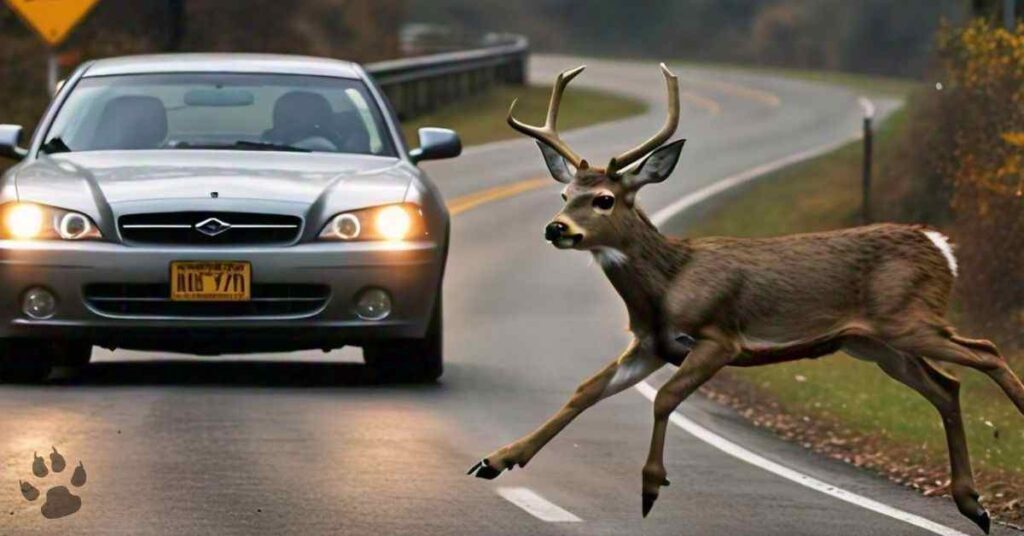
Reporting the Incident:
If a deer suddenly jumps in front of your car, report the incident as needed.
- First, contact authorities: In case of serious damage or injury, call the police to ensure a report is filed.
- Then, inform your insurance: Contact your insurance company about the accident to start your claim and get help fixing things.
You must complete both steps to handle the results and get the help and compensation you need.
Understanding Deer Behavior:
Deer often jump in front of cars because of their natural behavior.
- Herd Movement: When a deer crosses the road, others might follow behind, so keep an eye out.
- Active Times: Since deer are most active at dawn and dusk, they may appear unexpectedly during these times.
- Seasonal Patterns: During the mating season, deer are busier and more careless, increasing the chances of them crossing roads suddenly.
Knowing these patterns can help drivers stay alert and lower the chance of accidents.
Prevention and Safety Measures:
Switch on high beams when driving at night to lower the risk of hitting deer. However, turn on low beams if other vehicles are nearby to avoid blinding drivers.
To react better, drive at a slower speed in areas with known deer crossings. Be alert during dawn and dusk because deer are most active then. Noticing deer crossing signs can make you more aware.
After the Incident:
Injured Deer: If the deer is injured but not dead, notify animal control or wildlife services for assistance. They can care for the animal or safely take it away if required.
Legal Requirements: Find out the local laws for reporting deer-related accidents.
In some places, you may need to contact authorities or take certain actions to resolve the issue. These rules help you stay within the law and manage the situation correctly.
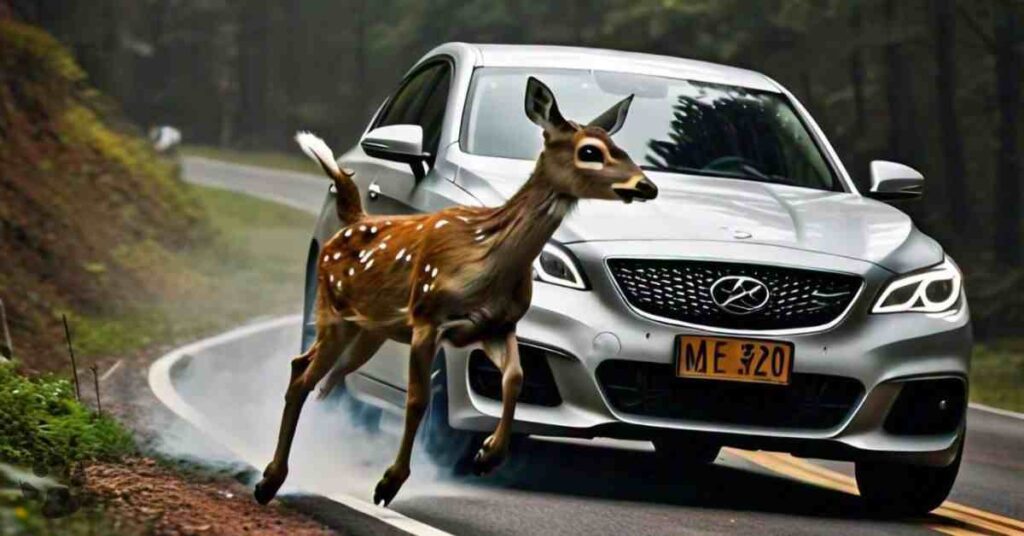
Why are deer attracted to roads?
Deer like roads for many reasons. They often eat grass near highways and crossroads to look for food or find mates.
Deer that are used to traffic sounds might be less cautious and may go onto roads, increasing the chance of accidents.
New sounds can surprise deer and make them run in unexpected ways, sometimes toward vehicles. When scared, they might freeze or run into traffic, which can be dangerous.
Why Do Deer Jump In Front Of Cars While Driving?
Instinctive Behavior: Deer may get frightened and run when they see car lights or hear car sounds.
Habitat Fragmentation: When there are more roads where deer live, they cross more often.
Breeding Season: Deer are more energetic and less alert during mating season.
Lack of Road Awareness: Deer might not view vehicles as dangerous and could misjudge how fast they are moving.
How Can an Early Warning System Will Help Prevent Accidents?
An early warning system alerts drivers to deer and other animals, reducing the risk of accidents.
Instead of using whistles or lights that might scare deer, this early warning system warns drivers about dangers so they can stop or move aside to prevent accidents.
Why Do Deer Like To Jump In Front Of Cars?
- Habitat Disruption: When cities grow, deer lose their homes and move nearer to roads.
- Food Sources: Deer can find grass and shrubs on roadsides.
- Seasonal Behavior: Mating season makes deer more active and less cautious.
- Reflexes: Deer’s natural fear of predators can cause them to run into roads.
- Limited Visibility: Deer may not see or respond to vehicles approaching fast.
Don’t Underestimate the Danger of Deer Running into Cars:
When deer hit cars, it is dangerous for both the deer and the people inside the car.
For safety, understand their seasonal habits, how deer behave, and where they go. Keep these tips in mind when driving in places with deer to prevent accidents.
Why Do Deer Run In Front Of Cars?
Instinctive Behavior: Deer follow their regular routes and can ignore cars as dangers.
Surprise: Deer might be alarmed by sudden noises and the appearance of vehicles.
Habitat Fragmentation: Roads disrupt their homes, so they have to cross high-traffic paths.
Limited Visibility: Poor visibility can make it hard for deer to see approaching cars.
Breeding Season: Deer are more active and less alert during mating season, which increases the chance of collisions.
Why Do Deer’s Jump Off Cliffs?
Deer can jump from cliffs to avoid predators or handle difficult terrain. Their ability to move fast and their instinct to escape threats can make them take sudden, risky jumps.
However, this kind of behavior is not common and often occurs when they are trapped or very anxious.
Why Do Deer’s Jump Off Bridges?
Deer can jump off bridges if they feel frightened, are confused, or are trying to escape from predators or vehicles.
Deer might not cross bridges correctly, which can cause them to fall if they misjudge the height or path. When deer are stressed, their judgment can suffer and cause risky behavior.
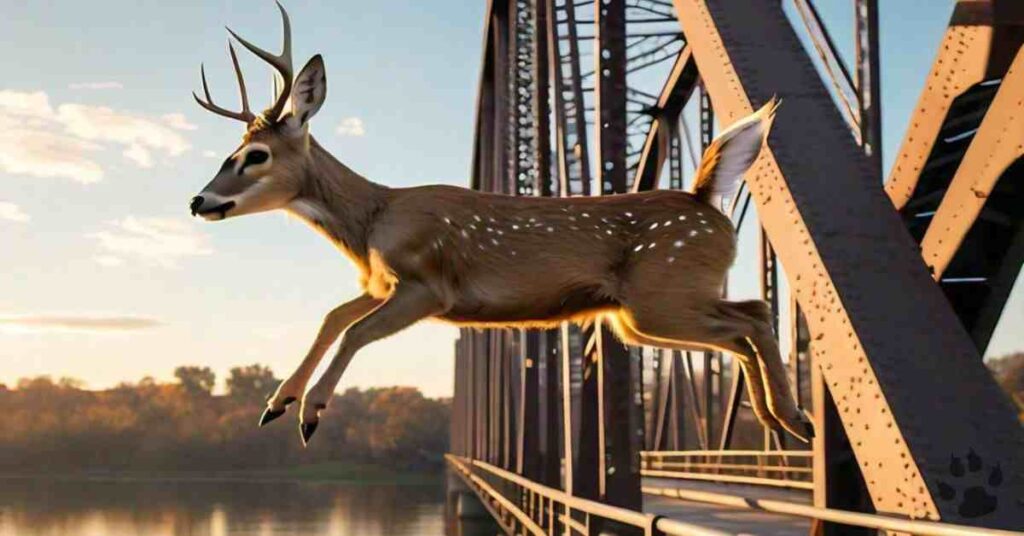
The Older I Get The More I Understand Why Deer Run In Front Of Cars Meaning:
Getting older, I understand why deer often jump in front of cars. Deer aren’t acting randomly; they often get confused by headlights and fast-moving cars.
They might be trying to escape from danger or simply not see the car. This information helps me stay alert and drive safely in places where deer are high in quantity.
Why Do Deer Jump In Front Of Cars At Night?
Deer’s poor night vision and natural behavior can make them jump in front of cars at night.
They may not estimate the distance or speed of vehicles correctly, especially if they are startled or searching for food on the road, causing sudden accidents.
spiritual meaning of a deer in your path
When a deer crosses your path, it could have a special meaning. Some say it means there’s a message or warning. This might mean you should slow down and keep a better eye on your surroundings.
Many people also say that it is a cue to have more faith in your instincts and follow your path. If you see a deer, it might be telling you to reflect on your life or make some changes.
Conclusion:
In conclusion, understanding the question “Why do deer jump in front of cars” involves recognizing their natural instincts and behaviors.
Things like their flight response, being disoriented by headlights, and habitat loss cause these risky situations. If drivers understand these causes and act to prevent them, they can lower the chance of accidents.
Keep your eyes open at dawn and dusk. Drive with care where deer are known to cross roads to ensure safety for all.
